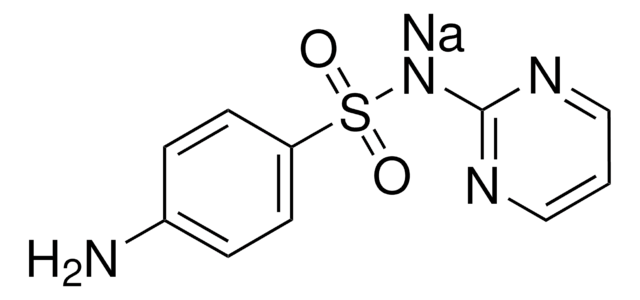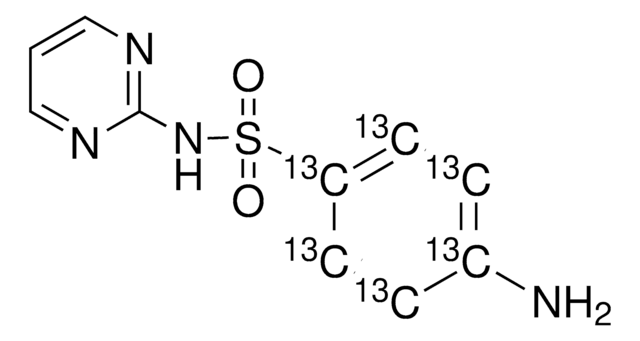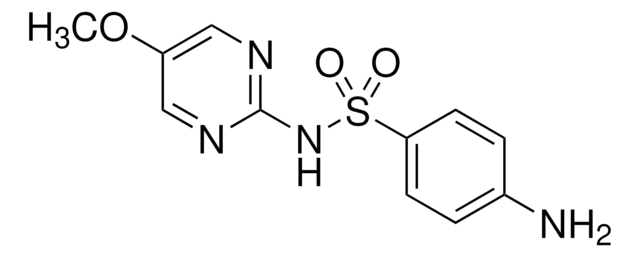S8626
Sulfadiazine
99.0-101.0%
Sinónimos:
4-Amino-N-(2-pyrimidinyl)benzenesulfonamide, N1-(Pyrimidin-2-yl)sulfanilamide
About This Item
Productos recomendados
description
Solubility - Practically insoluble in water, slightly soluble in acetone, very slightly soluble in ethanol (96 per cent). It dissolves in solutions of alkali hydroxides and in dilute mineral acids.
assay
99.0-101.0%
form
powder or crystals
color
white to faint yellow, faint pink
mp
253 °C (dec.) (lit.)
solubility
96% ethanol: very slightly soluble
acetone: slightly soluble
water: practically insoluble
antibiotic activity spectrum
Gram-negative bacteria
Gram-positive bacteria
mycoplasma
mode of action
DNA synthesis | interferes
enzyme | inhibits
SMILES string
Nc1ccc(cc1)S(=O)(=O)Nc2ncccn2
InChI
1S/C10H10N4O2S/c11-8-2-4-9(5-3-8)17(15,16)14-10-12-6-1-7-13-10/h1-7H,11H2,(H,12,13,14)
InChI key
SEEPANYCNGTZFQ-UHFFFAOYSA-N
¿Está buscando productos similares? Visita Guía de comparación de productos
Categorías relacionadas
General description
Application
Biochem/physiol Actions
Other Notes
signalword
Warning
hcodes
Hazard Classifications
Acute Tox. 4 Oral - Aquatic Chronic 2 - Repr. 2
Storage Class
11 - Combustible Solids
wgk_germany
WGK 2
ppe
dust mask type N95 (US), Eyeshields, Faceshields, Gloves
Certificados de análisis (COA)
Busque Certificados de análisis (COA) introduciendo el número de lote del producto. Los números de lote se encuentran en la etiqueta del producto después de las palabras «Lot» o «Batch»
¿Ya tiene este producto?
Encuentre la documentación para los productos que ha comprado recientemente en la Biblioteca de documentos.
Los clientes también vieron
Nuestro equipo de científicos tiene experiencia en todas las áreas de investigación: Ciencias de la vida, Ciencia de los materiales, Síntesis química, Cromatografía, Analítica y muchas otras.
Póngase en contacto con el Servicio técnico













